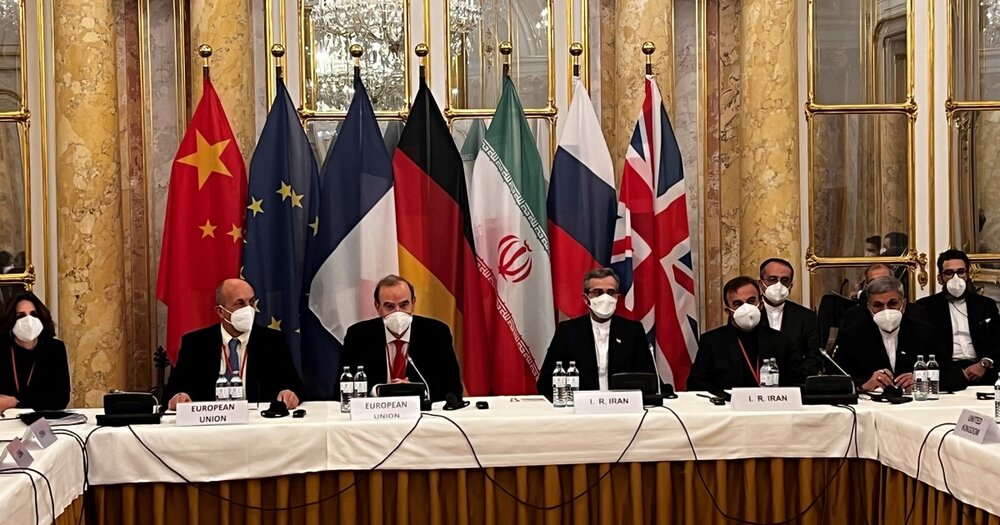
TEHRAN — Talks to restore the Iran nuclear deal are entering their “final stage,” officials say, as negotiators head back to their capitals to receive political guidance on what moves to take in the coming days, Politico said on Friday.
Western diplomats are facing a self-imposed mid-February deadline to try and revive the 2015 agreement, which restrained Iran’s nuclear program in exchange for sanctions removal. Some Western officials are concerned about Iran’s rapid nuclear advances since the U.S. abandoned the deal in 2018, as well as a looming report from the United Nations’ atomic watchdog that is expected to detail further Iranian nuclear advancements, likely generating new frictions.
That means the next few weeks are critical in determining whether the deal is restored — or talks fall apart altogether.
“January has been the most intensive period of these talks to date,” said a statement Friday from the three European countries involved in the negotiation: France, Germany and the UK. “Everyone knows we are reaching the final stage, which requires political decisions.”
A U.S. official familiar with the issue echoed the sense of urgency.
“No one should be surprised that we are coming to a final stage and that we need political decisions on the hardest issues, so everyone is going back to capitals,” the official said.
On this point, everyone seemed aligned, with Russia’s chief negotiator Mikhail Ulyanov saying that the negotiations had “reached [an] advanced stage when political decisions are needed.”
According to officials familiar with the talks, the outcome could go either way. While considerable progress has been made since a shaky restart to the negotiations in November, the U.S. and Iran have yet to settle all outstanding issues.
“We are eyeing the end of this negotiation, but it is important to understand that core political issues on all topics are still unresolved,” said one senior Western diplomat, who spoke on the condition of anonymity.
On the plus side, the senior Western diplomat said progress had been made on key topics, including how to limit Iran’s nuclear program once again, how to lift reimposed sanctions and — most importantly — how to sequence those steps.
But the sequencing question is still not fully settled. Those negotiations are proceeding “at a sluggish pace,” the diplomat conceded. The problem is that the sequencing process requires negotiators to create a careful dance for the U.S. and Iran, mapping out steps they must take over the course of months if a return to the deal is struck.
This could involve the U.S. taking the first step in lifting a number of sanctions, including preparing the ground to make global business with Iran viable again. Iran is keen to see that business actually in motion again to verify the sanctions have been lifted — seeing that they can load an oil tanker and sell it abroad, for example.
Iran, for its part, will have to take steps to reduce its nuclear program, as well as getting rid of its advanced centrifuges that are used to enrich uranium.
As always, however, the devil is in the details, which have yet to be finalized.
That said, the atmosphere at the talks in Vienna has improved since December, when Iran’s new government presented additional demands that pushed the talks to the brink of failure and contributed to friction within the U.S. team.
On Thursday, Brett McGurk, the White House’s national security council Middle East coordinator, said “we’re in the ballpark of a possible deal.”
“But again, I’m not going to put odds on this. There’s [also] a very real chance that these talks could collapse very soon,” he added, speaking during an event organized by the Carnegie Endowment for International Peace.
On this point, Iranian officials have recently made more optimistic statements, as well, including not fully ruling out any more direct talks with the U.S. at some point in the future. Currently, the two sides are conducting shuttle diplomacy through the other parties to the deal — the three European powers, plus China and Russia. The European Union is also coordinating.
Iranian President Ebrahim Raisi on Wednesday said that “if the parties are ready to lift the oppressive sanctions, there is room for any agreement.”
However, the senior Western diplomat said “currently there are no concrete signs” for direct U.S.-Iranian talks, even if they could not be excluded in the future.
The indirect format of the talks has meant that diplomats from the other world powers have spent months carrying proposals between the Iranian and U.S. delegations in Vienna, an incredibly cumbersome and time-consuming process.
The pandemic has also loomed over the talks, with several negotiators having to quarantine after testing positive for COVID, further slowing things down.
But after 10 months of intermittent discussions, the back and forth does appear to be coming to a potential finish, one way or another.
In addition to the self-imposed deadline of mid-February, diplomats in Vienna are conscious of an upcoming report from the International Atomic Energy Agency (IAEA). That’s when the agency will issue its next reports on Iran’s nuclear program.
The reports are expected to detail further increase in Iran’s stockpile of highly enriched uranium, as well as provide more information on the number of advanced centrifuges operating inside Iran’s main nuclear plants.

No comments:
Post a Comment